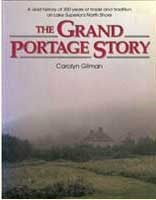
NPS Photo The Grand Portage Story

Books about the Fur Trade
Journals and histories of the fur trade era. 
Indigenous Peoples of North America
Books by and about Anishinaabe/Ojibwe and other peoples of North America. 
Books for Young Readers
Easy readers and chapter books for young people. 
Natural History
Natural history and archeology of the Grand Portage area. |
Last updated: January 8, 2025
